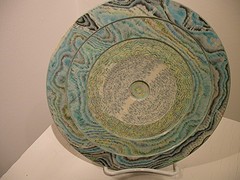This week’s Weekly includes my report on James Turrell’s talk last week sponsored by the Fairmount Park Art Association. Here’s the link to the art page and below is the copy. And here’s Libby’s post on the talk.
Touch the Sky
Using light as his material, James Turrell brings the heavens down to earth.
James Turrell‘s art career has been a journey to capture light and serve it up as art. The artist and MacArthur fellow, whose light projections are so convincingly three-dimensional that people have accidentally fallen into them, spoke at the Fairmount Park Art Association‘s 134th annual meeting. As he explains it, he’s not working with light; he’s working the light. “You don’t form it like clay. You don’t assemble it like steel, or cast it. But light has a thing-ness,” he says. Light is his material.
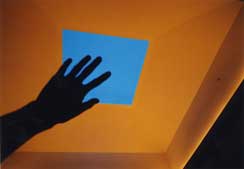
Turrell’s House of Light in Japan, a municipal bath and meeting house with retractable roof. Photo courtesy of Demu’s flickr photos.
If light has a thing-ness to it, so does the sky. Since 1974 Turrell has also been working on a sky project-called Roden Crater-that will capture the celestial vault and bring it down to earth-making it palpable and almost touchable-in specially designed sun and moon rooms carved into an extinct volcano in the Painted Desert in Western Arizona.
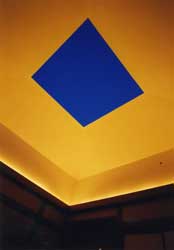
House of Light, Japan. There’s a nice sequence of day to night shots here at Demu’s photostream at flickr.
Turrell owns the crater, along with a cattle ranch and 640 acres of surrounding desert. When the owner told him he wouldn’t sell just the crater, which was all Turrell wanted, he had to buy it all. “I paid more for my New York apartment than I did for a ranch with a volcano on it,” the artist says, sounding bemused but not unhappy about his purchase. Agriculture now helps support the art-something that also tickles Turrell-as well as foundations like Dia, private donors, and sales of drawings and models. (The cost of the decades-long project was estimated at more than $20 million in Calvin Tompkins‘ 2003 New Yorker profile.)
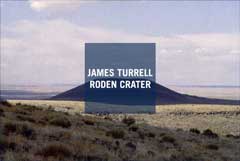
The Roden Crater website is under construction just like the big earth/sky project.
With construction entirely by Navajo workers who walk the 2-mile trek to work, Roden Crater may be among the wonders of the world some day-if it’s ever finished. Turrell once hoped to finish it in 2006, but he mentioned no timeframe for completion in his FPAA lecture. (You can’t visit Roden Crater, but you can experience Turrell’s permanent skyspace at PS 1 in New York.)
“I didn’t think it was going to be 40 years in the desert,” he says, explaining some of the financial ups and downs, to say nothing of the interpersonal ups and downs, since the project began. His first child was 2 years old in 1974. She’s now a doctor and a mother, he says, shrugging.
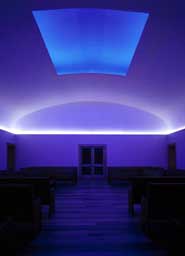
The Houston Meetinghouse.
A trained pilot with a full white beard and thick white hair, Turrell, 63, has a surprising sense of humor given the apparently spiritual overtones of his art. The exquisite light projections and skyspaces evoke the spiritual and cosmic nature of life. Throughout a recent slide lecture, he speaks like a Haiku master, in sardonic phrases that are a little self-mocking. He understands the P.T. Barnum-like show he’s putting on, but he’s enjoying himself nonetheless.
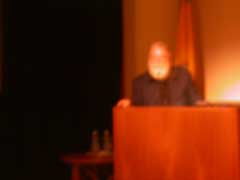
James Turrell, the icon. This is a picture I took at the lecture. It’s really bad but it captures some essence of him — his charisma, his luminous presence….See it bigger here.
Turrell’s Quaker grandmother would tell him to “look to the light” as he entered their meetinghouse each week as a child. Returning to Quakerism as an adult, the artist is working on a design for a skyspace at Chestnut Hill Friends Meeting-a place to come together in the light and stars. Turrell’s about creating sublime imaginative space to enhance the human experience. As he puts it, “If you don’t see stars at night, the psychological space of where you live is diminished.”


